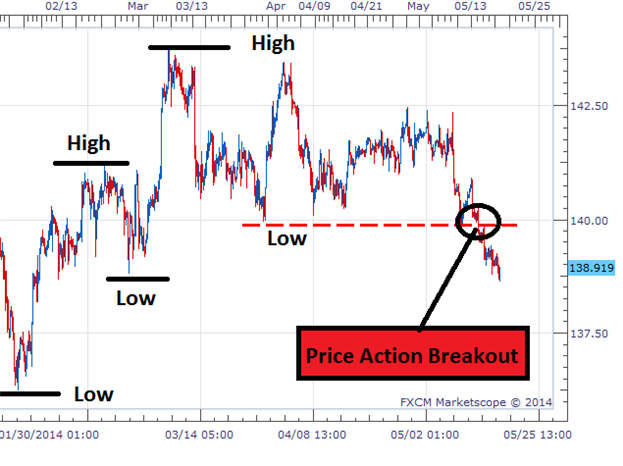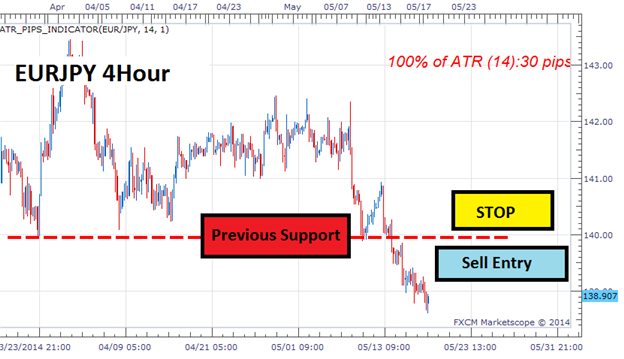Trading a Price Action Breakout (adapted from dailyfx article)
- Breakouts can determine market reversals and continuations
- Entry orders should be placed near support & resistance levels
- Stops and Limits can be entered using the ATR indicator
Previously the EURJPY had advanced as much as 756 pips from its February low to its current swing high at 136.22. However, looking at the chart below, it is important to notice that price action has moved below series of previous lows printed during the pair’s ascent. With the EURJPY breaking out towards lower lows for the first time in months, this makes the currency pair a prime candidate for breakout trading.
Today we will look at identifying a potential breakout and the opportunities that follow. So let’s get started!

Trading Breakouts
After finding the previous swing low or high in an uptrend, trading a price action breakout becomes a very straightforward process. Going back to our example on the EURJPY, the previous low for the pairs uptrend resided at 139.87. This point was acting as an area of price support for the pair as it was moving up towards higher highs. This support was acting like a floor for price and price action traders looking for a reversal have had to wait patiently for price to trade below this point. With the new creation of a lower low, traders began to sell this breakout with the expectation of price to develop a fresh downtrend.
Once a key line of support or resistance has been found, entry orders become an effective and easy way to prepare for a market breakout. An entry order is a pending order, and can be set through Metatrader. In the event that the market trades through a level or support or resistance, your order will be executed and your trade triggered into the market. Regardless if you are in front of your charts or not, by using an entry order your trade is scheduled to execute as soon as a breakout occurs!

Manage Risk
As with any active market strategy, trading carries risks. This holds true for breakout strategies as well. Because of this, after finding a breakout point to place an entry order, a trader’s next job should be considering how to manage their risk. Normally when trading a breakout in a new downtrend, traders will look to place stops above the broken line of previous support. Stop values can be placed 1ATR value above this level to account for current market volatility. In this example current ATR is 30 pips on the EURJPY. Once a stop is set using ATR (Average True Range), traders can then multiply that value to find a positive risk: reward ratio of their liking.
This is just one of many ways to start developing a price action strategy.
You are missing trading opportunities:
- Free trading apps
- Over 8,000 signals for copying
- Economic news for exploring financial markets
Registration
Log in
You agree to website policy and terms of use
If you do not have an account, please register
ATR channel:
Author: Nikolay Kositsin